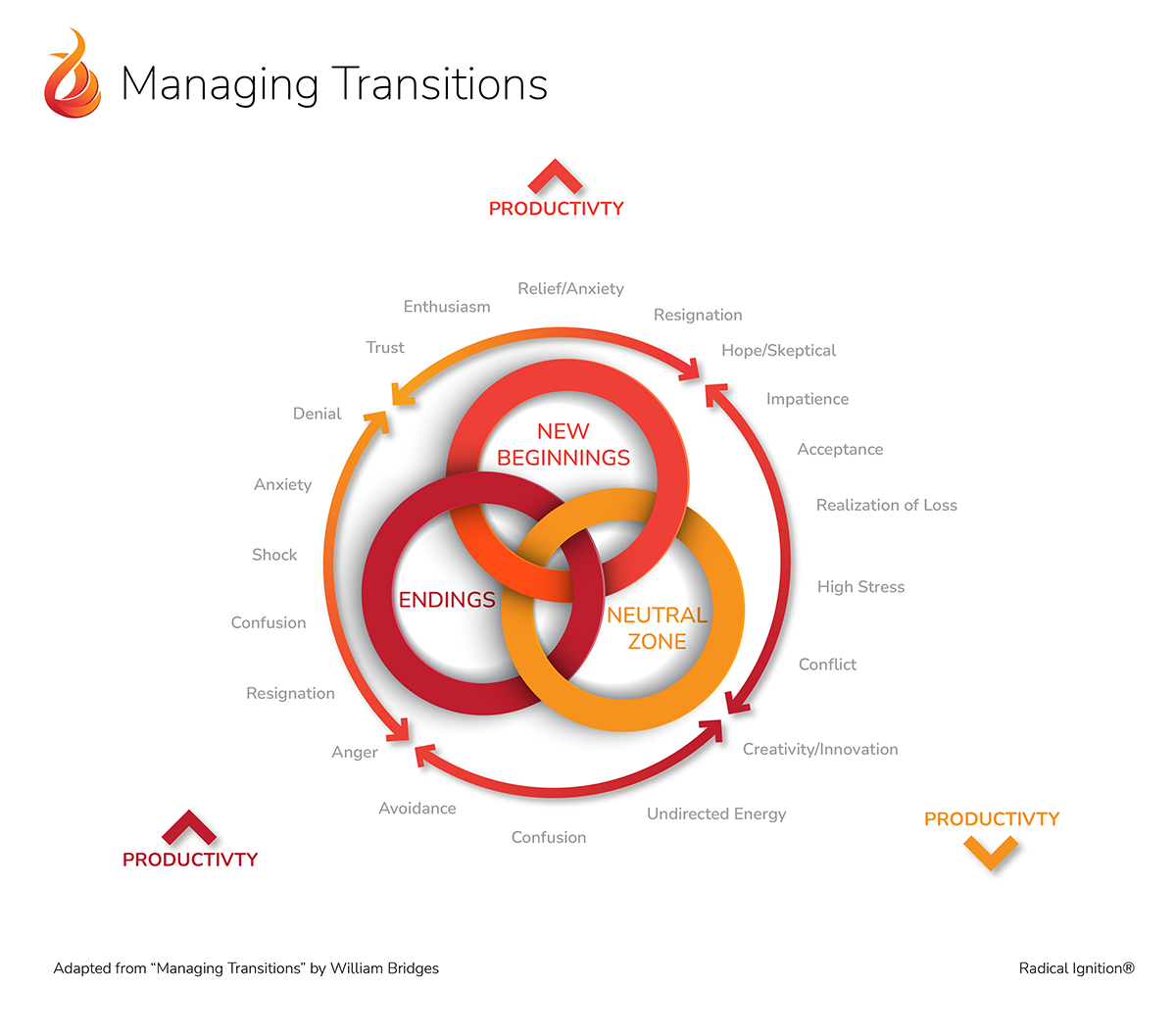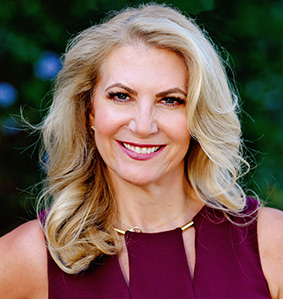As 2022 is coming to an end, I’ve been reflecting on the many shifts I’ve had the last few years – both professionally and personally. As a leader, one of your greatest challenges will be to successfully manage transitions. Simply said, transitions are the human side of change – the psychological reorientation of change. Transitions are how we effectively learn to let go of the past, accept the present, and focus on the future. Leaders most often focus primarily on the change itself, without giving enough thought to the the psychological side of the change (the human condition). In our experience working inside organizations managing change and transition, it’s the transition, and not the change itself, that most people resist.
In general, we have difficulty letting go of the past and the way things used to be. It’s saying goodbye to the way things used to be and what has been lost. We all show up differently this way. Also, our brains dislike uncertainty. We saw this during the Pandemic. Often, employees will complain about the way things used to be or the changes in place for months or even years to come. This can prevent people from moving forward. We see this when we work with organizations on acquisition integrations. We want our leaders to learn how to ensure psychological safety in their teams which ultimately reduces anxiety, chaos, and frustration. This way employees can best move through the transition which leads to credibility and trust.
In 2020, we adapted this model based on William Bridges Model “Managing Transitions”:

Bridges says that transitions begin with an ending.
The first phase is when “people identify what they are losing and learn how to manage these losses.” according to Bridges. Recently, after I experienced my own loss, I revisited this model. I realized it isn’t a linear process. At times I felt I was in the Neutral Zone nearing my New Beginning, yet suddenly I would feel anger and denial again – cycling back to the Endings Zone. I started to see this model in more of a cycle so we created this new model:

There are different levels of productivity in each zone. When I realized I was in transition again, I was sad and almost depressed for weeks. At first, I was shocked at what had happened in my life. Then I wanted to reject it – but couldn’t. Next, I got angry. When the anger phase hit, it was sort of a relief, because I felt extremely productive. When things are ending, this is often what is happening. We have a hard time letting go, we are in denial, and we might feel angry. We might have a new sense of energy.
Bridges says, “The Neutral Zone is the very core of the transition process. This is the time between the old reality and sense of identity and the new one. People are creating new processes and learning what their new roles will be. They are in flux and may feel confusion and distress.”
The neutral zone is the seedbed for new beginnings.
We see the Neutral Zone as the “messy middle”. It’s also where creativity and innovation can happen. If you look back to 2020, when companies were pivoting and creating new business models – they were in the “messy middle”. Productivity was low and many were not producing a lot of revenue. However, it was an amazing time of innovation, and many organizations were able to create new products and shift their strategies.
One of the first things you can do as a leader is to plot yourself on the model and ask yourself what you might be feeling. Secondly, make sure to practice self-care. Next, check in with everyone on your team. Remember that everyone shows up differently, and more than likely, everyone will be in a different place. We all handle change in different ways. Lastly, show people you care by validating how they feel. The more curious you can be, the better. After we’ve checked in with everyone on the team, the next challenge is to help pull them along the cycle ultimately getting them to a New Beginning state and to learn to trust again. It comes with a tremendous about of relief and maybe a little anxiety for most people.
Whether it’s a change at work or at home, transitions can be impactful and come with many emotions. The more you are aware about your own feelings during transition along with your teams, the more you can show you care ultimately leading them around the cycle to trust.
 Melanie is the Chief People Officer of HaptX, Inc and Founder & CEO of Radical Ignition, Inc. In her 25-year career, Melanie has developed a passion for unleashing human potential and creating pathways for people to be their best. Melanie’s successful track record having worked across hundreds of technology organizations in her consulting career gives her a great perspective as a speaker, facilitator, leadership coach and HR leader.
Melanie is the Chief People Officer of HaptX, Inc and Founder & CEO of Radical Ignition, Inc. In her 25-year career, Melanie has developed a passion for unleashing human potential and creating pathways for people to be their best. Melanie’s successful track record having worked across hundreds of technology organizations in her consulting career gives her a great perspective as a speaker, facilitator, leadership coach and HR leader.


